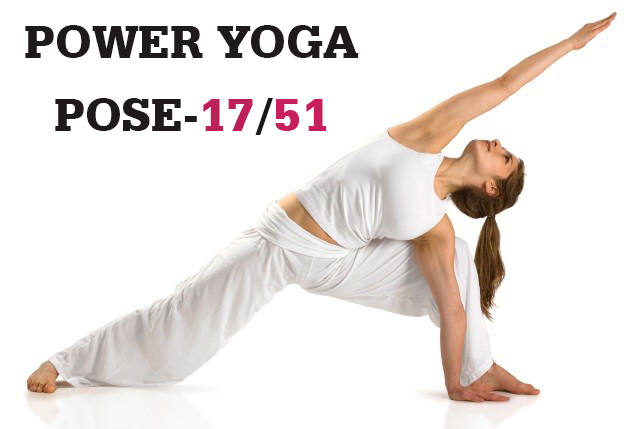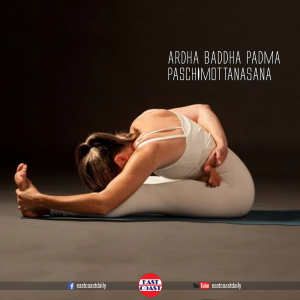
Ardha Baddha Padma Paschimottanasana
This is the sixteenth pose among Power Yoga Poses. Power Yoga is a wellness-based vinyasa hone. A branch of Ashtanga Yoga, it has a significant number of similar characteristics and advantages, including building inward warmth, expanded stamina, quality, and adaptability, and also push decrease. Ardha means half, Baddha means bound, Padma means lotus, while Paschimottanasana is composed by Paschim that means back body, Uttana means intense stretch, and Asana means pose.

How to do Ardha Baddha Padma Paschimottanasana?
- Sit in Dandasana, with the spine straight.
- Bend the right knee and bring the shin as close as possible to the chest, then place the right dorsum of the foot on the left groin, in half lotus.
- Bring the right knee as close as possible to the floor, pointing forward. Sweep the right arm behind the back and grab the right big toe.
- Exhale, extend the body forward and grab the left foot with the left hand if possible, otherwise just grab the ankle. Move the right frontal hip, right shoulder, and rib cage forward, so the upper body is in line and facing straight.
- Exhale and try to place the forehead on or toward the left shin.
- Trying to reach the shin with the head before time could bring you to bend the spine in a wrong way. Hips and shoulder not in line is another common mistake.
- As mentioned before, the spine should be lengthened, the hip bones parallel to each other, and the shoulders pointing forwards. Buttocks should both touch the floor.
Benefits
- increase the flexibility of knee, hip, and shoulder joints
- stretch back muscles and calf muscles
- increase blood circulation to the spinal nerves
- massage and tones internal organs
- reliefs constipation
- stimulate liver and kidneys
Drawbacks
Don’t practice if suffer from asthma. It should be approached carefully from who have knees problem, due to the possible knee twist applied during the position.

Post Your Comments